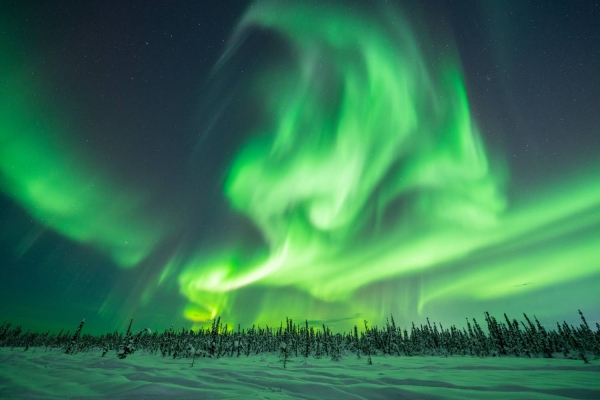
Have you ever seen an aurora? Seeing an aurora is on many people’s bucket lists. Also known as Northern lights, it is an atmospheric phenomenon that creates enchanting dancing waves of light associated with countries surrounding the Arctic like Canada, Russia, and Norway. If you have planned to visit these countries to see one, you may have to change your plane. Just this month, the North Pole was not the only place showing these mesmerizing shining skies. Parts of the UK, Ukraine, and Slovakia were spotted with the borealis.
What makes this possible? According to the experts, southern sightings could become more common with increased solar activity. First, if we look into the cause of the aurora, the phenomenon starts from the magnetic poles. Occurring above the magnetic poles in the Northern and Southern hemispheres, they form when gas is a particle in the Earth’s atmosphere. Gas particles collide with charged particles released from the sun. Electrons and protons from the sun are blown toward the Earth by the solar wind. As these are carried towards Earth, most of them are deflected by Earth’s magnetic field. However, the magnetic field is weaker at the poles, allowing some of the particles to funnel into the Earth’s atmosphere. The vibrant colors we see are a production of the type of gases that are colliding. The result is a brilliant display of the common green in yellow or even rare red paintings.
Back to the question, our sun is becoming more active. That is happening this winter. Before moving on, let’s go over the concept of the solar cycle. A solar cycle is an approximately 11-year cycle of solar activity driven by the sun’s magnetic field which is indicated by the frequency and intensity of sunspots visible on the surface. Now, the 25th solar cycle is kicking off in style. It is possible to track the level of solar activity by counting sunspots. Dark patches on the surface of the sun which correlate with the occurrence of solar flares. The last few years have been a period of low activity but now, the number of sunspots seen is steadily increasing. When the high-speed solar wind blows over Earth, the Earth’s own magnetic field deflects the solar wind. This magnetic barrier is weakest at the poles of the “bar magnet” which is a reason why we tend to see auroral displays at high latitudes. However, the bigger the space weather storm gets, the deeper charged particles can penetrate the magnetic field of Earth, causing the northern lights to be shown at lower latitudes.
Although charged particles strike the upper atmosphere and create a beautiful display, these are not just beautiful displays. These extreme space weather events can affect a wide range of systems, from power supplies to aviation, satellites and radio communications. The effects can induce unwanted currents in any electrical power grid, which could lead to damaging satellites.
Still, places like Ravenscar of UK, Auronzo di Cadore of Italy, Norfolk of Uk, Stanca of Sovakia, Kyiv of Ukraine and even Mohe, China were able to see an Earth’s light show. Things will be different in the future as the solar cycle changes, but if you are planning on going to see the Aurora in the next few years, think twice about the country you will head to.


